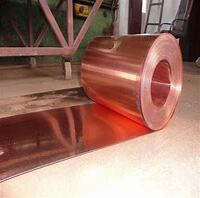1. Introduction
Just 48 hours ago, global copper prices surged past $9,200 per metric ton due to supply chain disruptions in Chile and renewed demand from renewable energy projects (source: Trading Economics). That’s great news if you’ve got scrap copper—but only if it’s properly prepared. Stripping copper wire correctly can increase your scrap value by 30–50% compared to selling insulated cable.

In this guide, we’ll show you the best way to strip copper wire—whether you’re salvaging from old electronics, HVAC systems, or construction sites. You’ll also learn why clean, bare copper like copper strip, copper round bar, or even copper rod for welding fetches top dollar at recyclers.
2. Why Strip Copper Wire?
Recycling centers pay significantly more for bare bright copper than insulated wire. Burning copper wire for scrap is illegal in many areas and damages the metal, reducing its resale value. Plus, clean copper can be reused in high-value applications like copper bus bar, flexible copper bar, or copper earth rod manufacturing.
- Stripped copper sells for $3.50–$4.50/lb (as of May 2024)
- Insulated wire may only fetch $1.00–$2.00/lb
- Clean copper strip, copper rod price, and copper ingot price all track closely with LME rates
3. Tools You’ll Need
The right tool depends on your volume and wire type. For small jobs, manual strippers work fine. For bulk stripping, consider investing in a motorized stripper.
- Manual wire stripper (for 14–10 AWG household wire)
- Automatic wire stripping machine (for long runs or thick cables)
- Utility knife (use with caution)
- Heat gun (optional, for stubborn insulation)
- Safety gloves and goggles

Avoid using open flames—burning copper wire for scrap releases toxic fumes and oxidizes the metal, lowering its grade.
4. Step-by-Step: How to Strip Copper Wire Safely and Efficiently
4.1. Sort Your Wire First
Separate types before stripping: THHN, Romex, coaxial, and appliance cords all have different insulation. Also, identify if you have copper strip wire, flat copper strip, or even beryllium copper strip—these may not need stripping at all.
4.2. Choose the Right Method
For thin wires (<12 AWG): Use a manual stripper. Clamp the tool, rotate gently, and pull off the insulation.
For thick cables (e.g., 2/0 or larger): Score the jacket with a utility knife, then peel it back like a banana. Never cut into the copper strands.

For long reels: Use an automatic stripper. Feed the wire through, and it strips cleanly in seconds—ideal for stripping wire for recycling at scale.
4.3. Avoid Common Mistakes
- Don’t nick the copper—it reduces conductivity and scrap grade
- Don’t mix aluminum with copper; recyclers penalize contamination
- Don’t burn insulation; it’s unsafe and illegal in most U.S. states
5. What to Do With Stripped Copper
Once clean, bundle your copper by type:
- Bare bright wire (highest value)
- #1 copper (clean pipe, bus bar, copper tubing)
- #2 copper (tarnished or soldered pieces)
You might also have copper strip near me buyers looking for flat copper strips, nickel plated copper strip, or 1mm copper strip for electronics. Even copper roof strip or copper tape for snails can be recycled if clean.
Don’t overlook related items: copper pipework, aircon copper pipe, or copper pipe fittings can be sold alongside stripped wire. Check ac copper pipe price trends—they often move with scrap rates.
6. Where to Sell & Pricing Tips
Use apps like iScrap or Scrap Monster to find local yards paying top copper rod price or copper strip price. Ask specifically about:
- Bare bright copper
- Copper round bar or cu bars
- Copper bonded ground rod vs. solid copper earth rod
Note: Copper bonded steel and copper clad steel ground rod contain less copper and are worth less than solid rod copper. Always verify what you’re selling.
7. Bonus: Repurposing Copper Instead of Scrapping
If you have copper strip roll, thin copper strips, or copper metal strips in good condition, consider repurposing:
- Make DIY earthing rods (copper earth strip 25x3mm is standard)
- Craft flexible copper bus bar for hobby electronics
- Use copper edging strip for art or roofing
Even copper alloy strip like beryllium copper strip has niche resale value in aerospace or toolmaking.
8. Conclusion
Stripping copper wire properly isn’t just about compliance—it’s about maximizing profit. With copper prices rising and demand for clean copper in everything from AC copper pipe to copper welding rod growing, taking the time to strip correctly pays off. Use the right tools, avoid burning, sort carefully, and always compare scrap yard quotes. Whether you’re handling stripping cable for copper from old HVAC units or salvaging copper strip wire from demolition sites, clean copper always wins.
Our Website founded on October 17, 2012, is a high-tech enterprise committed to the research and development, production, processing, sales and technical services of ceramic relative materials such as How. Our products includes but not limited to Boron Carbide Ceramic Products, Boron Nitride Ceramic Products, Silicon Carbide Ceramic Products, Silicon Nitride Ceramic Products, Zirconium Dioxide Ceramic Products, etc. If you are interested, please feel free to contact us.

